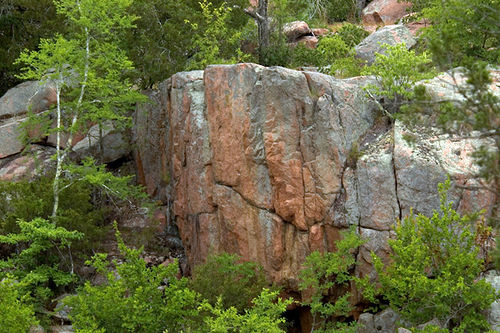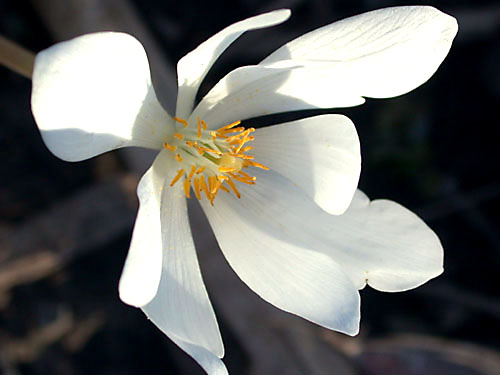Recovered from the Wayback Machine.
In 1927, the rain kept falling in the Mississippi delta. Folks would look at the sky anxiously, hoping for a break, but none came. Those who lived near the Mississippi, well they knew he was a cantankerous old bastard and could turn on they any old time. They’d watch the levees, those mounds of dirt and tough old swamp grass that was all that stood between them and the waters.
Most years, the levees held and the rich, wet lands yielded plentiful crops–usually cotton, though some land owners ran sugar cane. The folks that farmed the lands were black, but they didn’t own the lands, no sir. No they were sharecroppers, which back in those days was only about a drop of blood away from slavery.
Then early that year, a wall of water came down south, riding the Sip like a drunk-happy gambling boat captain. It started in Illinois, where those in charge, the Mississippi River Commission pointed to their work, their levees and said without a doubt they’d hold. Then right before Easter, the levees gave up their fight and started to fail, one after another.
“On that night that the levee broke, when daddy went out and he could see the water coming across the fields. And our house was about, I guess about eighteen inches off the ground. And he come back in the house, he says, “”I see the water coming across the field. It done filled up a big slew coming between our house and the levee,” and it’s level out there. So he come back in the house and stayed about twenty minutes. About 10: 00 that night, we were moving a few bed things up in the loft part of the house, and there’s where we was until the next morning. And we stayed in there, up there, two nights and three days. Finally a seaplane come along, and my daddy had done cut a hole where we could look out on the outside, and he was waving a white rag when that seaplane come by. And then about two hours after then, it was a gas boat going up there and taking us all to the levee. And we lived up there on the levee until the water went down.”
William Cobb On the Night when the Levee Broke
In Greenville, Mississippi over 13,000 blacks are stranded on the levee without food and water and little protection from the elements. When boats arrive to rescue those flooded out, only the whites are picked up, because the plantation owners in the area are worried that if the blacks are ferried out, they won’t return to farm the land.
Will Percy decides that the only honorable and decent course of action is to evacuate the refugees to safer ground down river and arranges for barges to pick up and transport the refugees. Many people are reluctant to abandon Greenville, despite the fact that their homes have been submerged. The planters, in particular, oppose Will’s plan, fearing that if the African American refugees leave, they will never return, and there will be no labor to work the crops. LeRoy (ed. note: Will Percy’s father), placing his business interests above his family’s tradition of aiding those less fortunate, betrays his son and secretly sides with the planters. Boats with room for all the refugees arrive, but only 33 white women and children are allowed to board. The African American refugees are left behind, trapped on the levee. Later, Will Percy will write that he was “astounded and horrified” by this turn of events.
To justify his relief committee’s failure to evacuate the refugees, Will Percy convinces the Red Cross to make Greenville a distribution center, with the African Americans providing the labor. Red Cross relief provisions arrive in Greenville, but the best provisions go to the whites in town. Only African Americans wearing tags around their necks marked “laborer” receive rations. National Guard is called in to patrol the refugee camps in Greenville. Word filters out of the camps that guardsmen are robbing, assaulting, raping and even murdering African Americans held on the levee.
From: PBS A Fatal Flood
The flood waters covered over over 27,000 square miles across several states, Mississippi and Arkansas being hardest hit. Over 240 are known to have died, but record keeping was poor in those times.
“Back up to a house . . . there was seven people on it. I presume it was wife . . . man, his wife, and five children. And I was heading over to this house. This was on my first hauling, the next day after the levee broke. And on the way getting to the house—this house was just moving along [in the river], you know—and all of a sudden it must of hit a stump or something. And the house flew all to pieces. And I searched the boards and things around there for ten minutes, and you know I never saw a soulÌs hand come up, not a soul.”
Henry Caillouet Seven All Together Went Down
The flood lasted two months, and the folks in New Orleans had actually dynamited a levee before the city–an act that proved unnecessary because broken levees elsewhere along the Sip had spilled enough water so the river wasn’t a threat to the city.
By the time it was over, 700,000 people had lost their homes, and a hundred thousand homes and businesses were destroyed. The costs of the flood topped 4 billion dollars by 1993 standard’s–a comparison brought to mind because in 1993, another great flood hit, but this time further north in Iowa, Kansas, and Missouri. I remember talking to a man in an old lighthouse on the hill overlooking Hannibal, Missouri about the day when the waters began to rise. He was a simple man who liked to talk with people, becoming an unofficial greeter to those visiting the lighthouse.
“You see there”, he pointed out at the far shore of the Mississippi. “The water came from that direction. It just kept rising and rising, and it came toward the town, like a great, slow moving wave.”
He then pointed at the bridge that spanned the River.
“There was another bridge here during the flood. I watched as people tried to get across the bridge, to get to their families and homes before they were cut off from the waters.” I remember him smiling, raising his red feedcap (of which he was very proud), to resettle back on his head. “I watched as they blowed it up to make way for the new bridge.”
When the floods washed out the approaches to the bridge, people had to commute from one side to the other of the river either by plane, or driving 200 miles away. Hannibal was underwater for 147 days before the flood began to recede; some towns were under even longer. Even St. Louis had flood waters lapping at the heels of the Arch, and flowing down the normally dry Des Peres river into the city and into the neighborhoods only a block or two from where I live now.
The 1993 flood displaced 74,000 people, and destroyed 45,000 buildings and homes. It’s cost was 7.5 billion.
Today, the most significant sign you see of the flood of 1927 is the number of blacks living in northern cities. After the flood, many left the delta area, either because they lost their homes, or because of their harsh treatment; most likely because of the harsh treatment. There is some irony in this mistreatment of blacks, and the fears on the part of the white landowners about losing their workers. I think if the blacks had been treated decently, many wouldn’t have left, thereby hastening the final curtain call for the old southern plantation culture.
And when the blacks left, they took with them part of the southern culture, manifested in the blues that followed every where they went: Chicago, Seattle, New York, and points beyond. Some would even say that the 1927 flood was the birth of the blues, such as this When the Levees Break, recorded by Kansas Joe, recorded in 1929.
If it keeps on rainin’, levee’s goin’ to break
If it keeps on rainin’, levee’s goin’ to break
And the water gonna come in, have no place to stayWell all last night I sat on the levee and moan
Well all last night I sat on the levee and moan
Thinkin’ ’bout my baby and my happy homeIf it keeps on rainin’, levee’s goin’ to break
If it keeps on rainin’, levee’s goin’ to break
And all these people have no place to stayNow look here mama what am I to do
Now look here mama what am I to do
I ain’t got nobody to tell my troubles toI works on the levee mama both night and day
I works on the levee mama both night and day
I ain’t got nobody, keep the water awayOh cryin’ won’t help you, prayin’ won’t do no good
Oh cryin’ won’t help you, prayin’ won’t do no good
When the levee breaks, mama, you got to loseI works on the levee, mama both night and day
I works on the levee, mama both night and day
I works so hard, to keep the water awayI had a woman, she wouldn’t do for me
I had a woman, she wouldn’t do for me
I’m goin’ back to my used to beI’s a mean old levee, cause me to weep and moan
I’s a mean old levee, cause me to weep and moan
Gonna leave my baby, and my happy home.
The flood was also responsible, in part, for some of the success of the Civil Rights movement later in the 1960’s. Whites in the north, and even parts of the south, came face to face with the atrocities committed on blacks in the delta. And blacks found that they were no longer willing to be free in name only.
You also don’t see any of the damage from the 1993 flood, though again you see signs of it everywhere. At the restored Hodgson Mill, there was a pencil scratch half way up the second floor of the mill that marked the highest level of the flood. Most of the towns at risk along the Sip have also installed high floodgates, painted or not dependent on the town. The government also bought out flood-prone farms and made many into parks and conservation land.

When floods happen, people move, but when the waters recede some return, while others move in. Life goes on, because flooding, no matter how tragic the losses, is a part of life. It is a part of the delta, a legacy and a price for living by the river.
Right now, the delta is being hit again, but this time it isn’t Old Man River who is to blame. Lots of stories about this new flood, too; lots of cries of doom and destruction: Thousands are dead, exclaims the mayor, even while he has people on roofs listening in on radio;Katrina leaves a trail of death and destruction, says the papers, even while people desperately hope for a green cot in a dome in another city; The Mississippi coast is gone, says the governor, even as people pick through rubble and find a single shoe. The recovery will take years, says the President, even as the finger pointing and blaming has begun. Stories about looters and havoc and ruin and how nothing will be the same again.
The city is destroyed. Well, now, I take exception to that one. You can’t destroy a city unless you kill off every last one of the people who live in and love the city. You would also have to remove every reference to it in history, and all of its culture, and every last bit of influence it has ever had in the past, present, and we presume, future.
But I do not intend to give up easily. Why? Because I am absolutely convinced that New Orleanians will not allow their city to become a ghost town. And I intend to be part of the renewal that springs from this determination.
…
The culture of New Orleans has long since factored disasters and general uncertainty into its economic and philosophical outlook. An early-19th-century cholera epidemic killed one out of five New Orleanians, the equivalent of 100,000 today. Even the gravediggers died, forcing people to pile bodies at the cemetery gates. The first owner of the Lombard Plantation was among those who succumbed. But his wife and family stayed on, and some of their descendants, both white and black, are still in New Orleans today, perhaps perched on their rooftop awaiting rescue or huddling gratefully with friends out in Lafayette or Breaux Bridge.I expect they, too, will return, and that life in New Orleans will go on, with all its precariousness and sense of fragility and, yes, with all its relish for the moment. That relish, by the way, which arose from the constant awareness of precisely such disasters as we are experiencing today, accounts for much of what gives the people of that city their reckless abandon, their devil-may-care attitude, and their zest for life. Rebuilding after Katrina will be just the next in a long series of events in which that spirit has been manifested.
S. Frederick Starr in A Sad Day, too, for Architecture.
Here’s a prediction: come March, 2006, with our help, the towns along the coast will rebuild. A home will replace rubble, and a church will open its doors again. With our care, the bodies will be buried, and those who have suffered loss will be comforted. With our force, we will overcome those who grab gun and seek to cause fear (and in the process find that the ‘gangs’ become ‘groups’ and the groups are fewer than our lurid speculations imply). With our support, the casinos and businesses along the coast of Mississippi will be in full swing, and folks will be back at work. And with our hard work and sacrifice, the Mardi Gras parade in New Orleans will be the best. Ever.
The city is destroyed. What foolish nonsense. You know, the people that wrote this, they really don’t know the South, and the people who live by big water.







